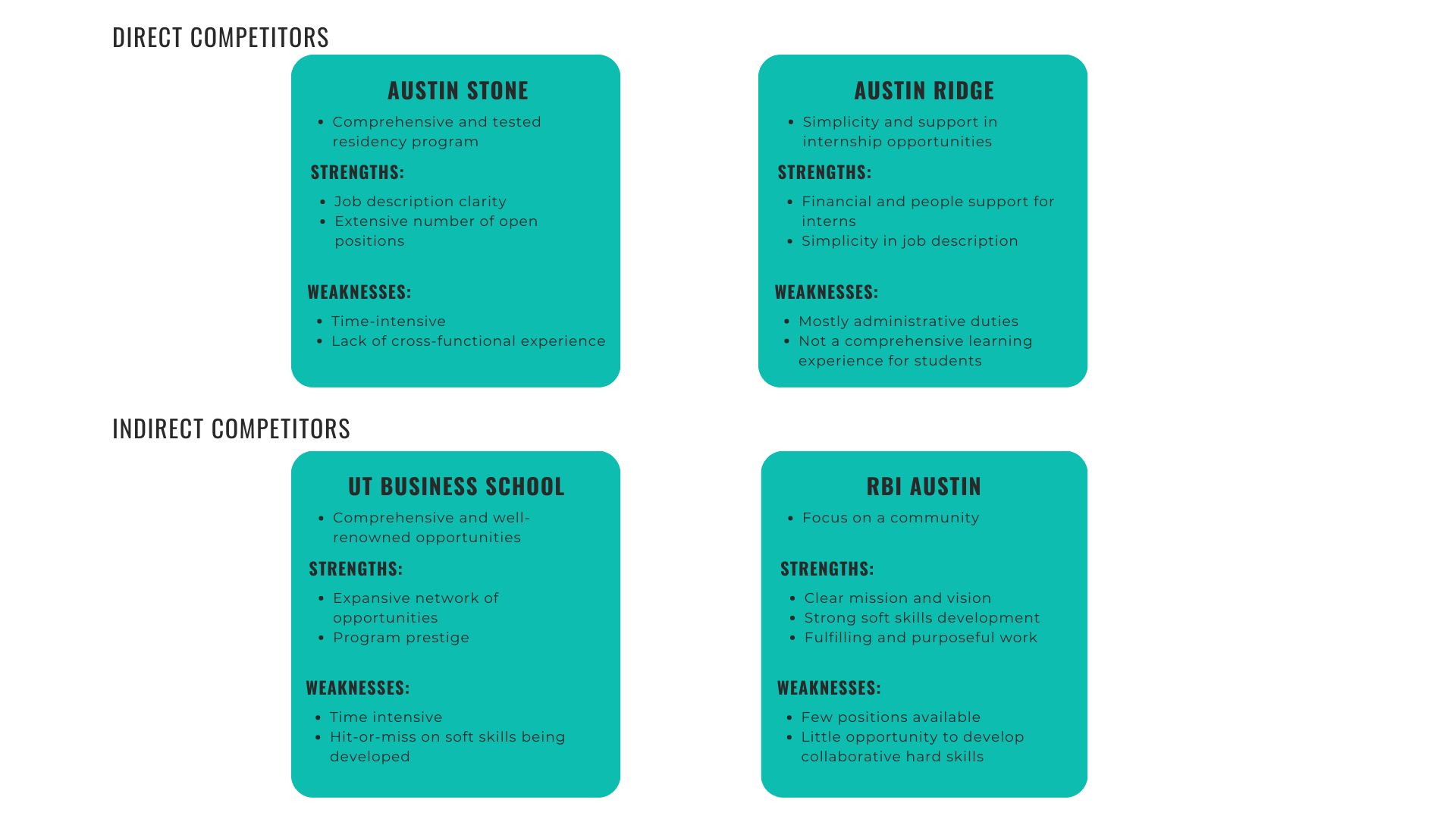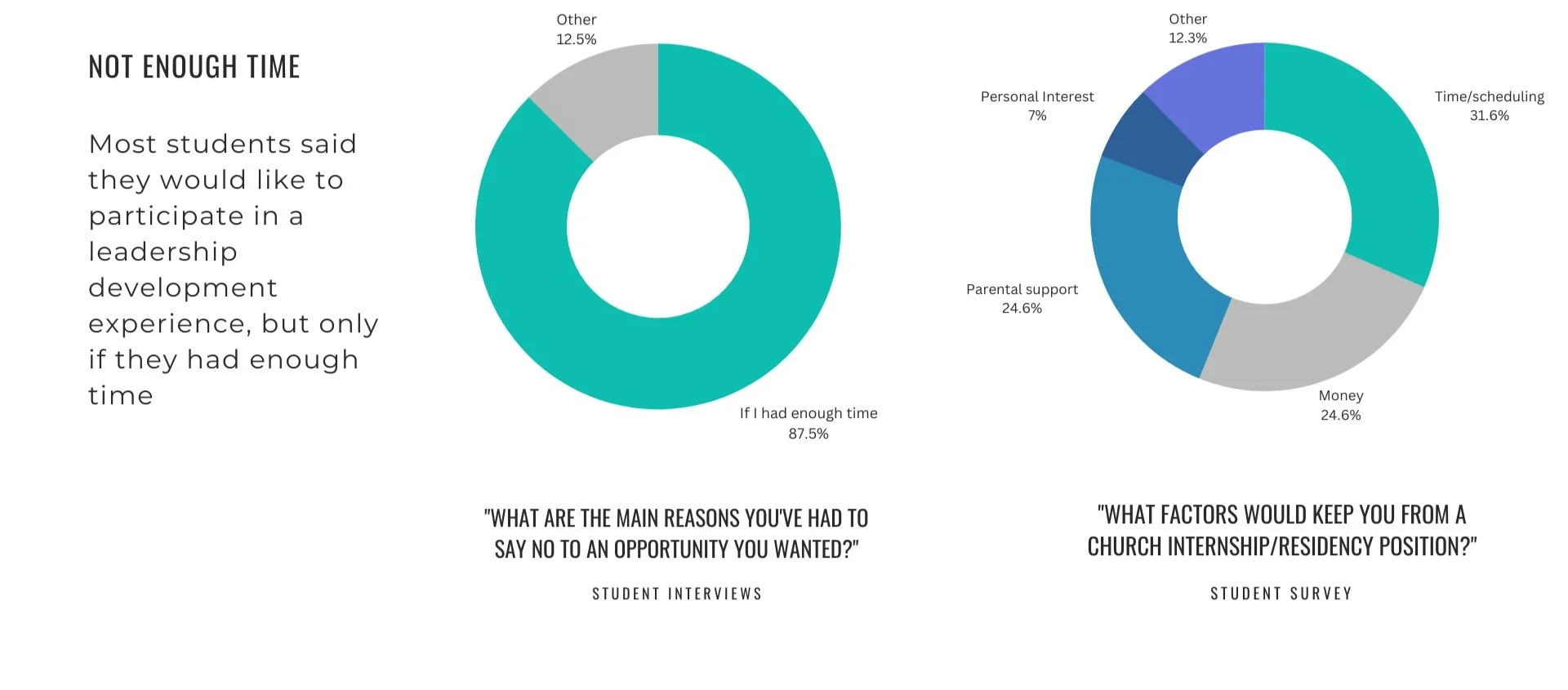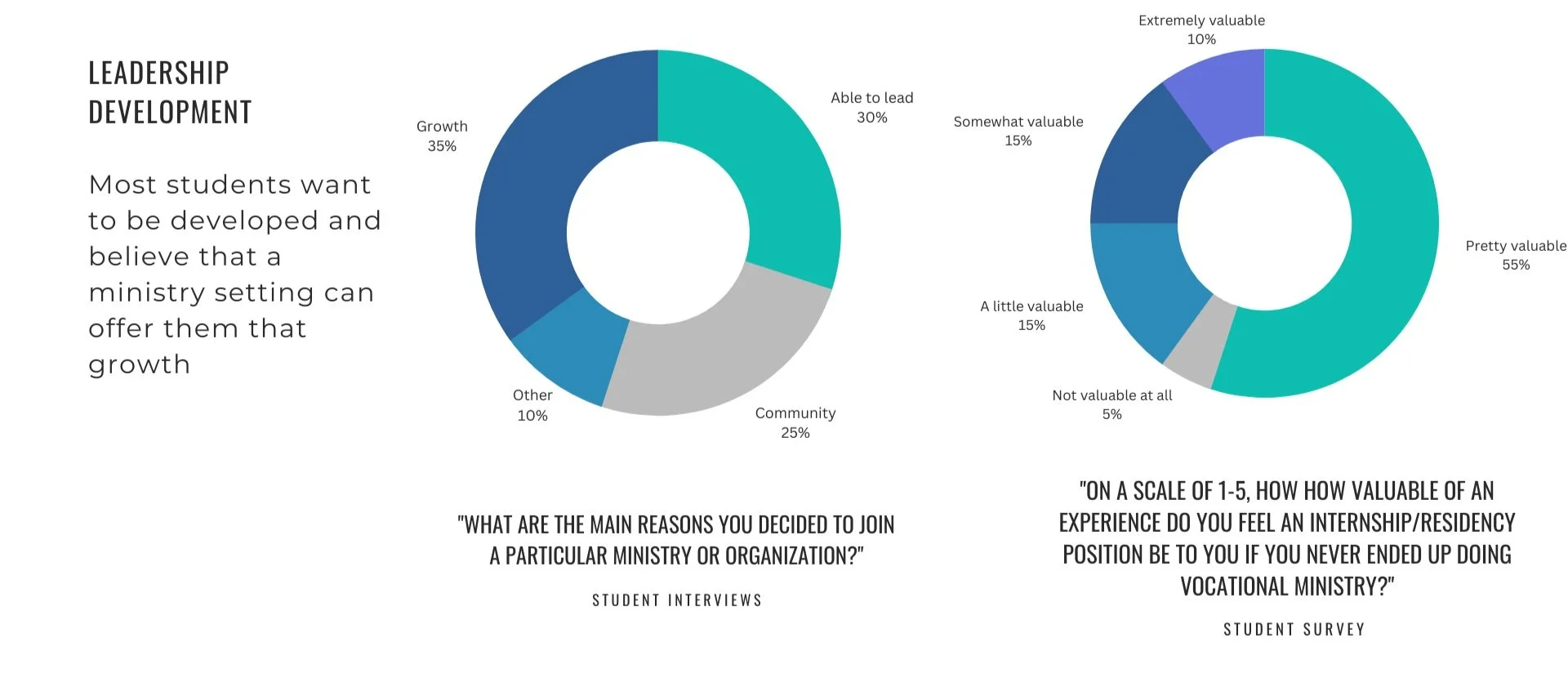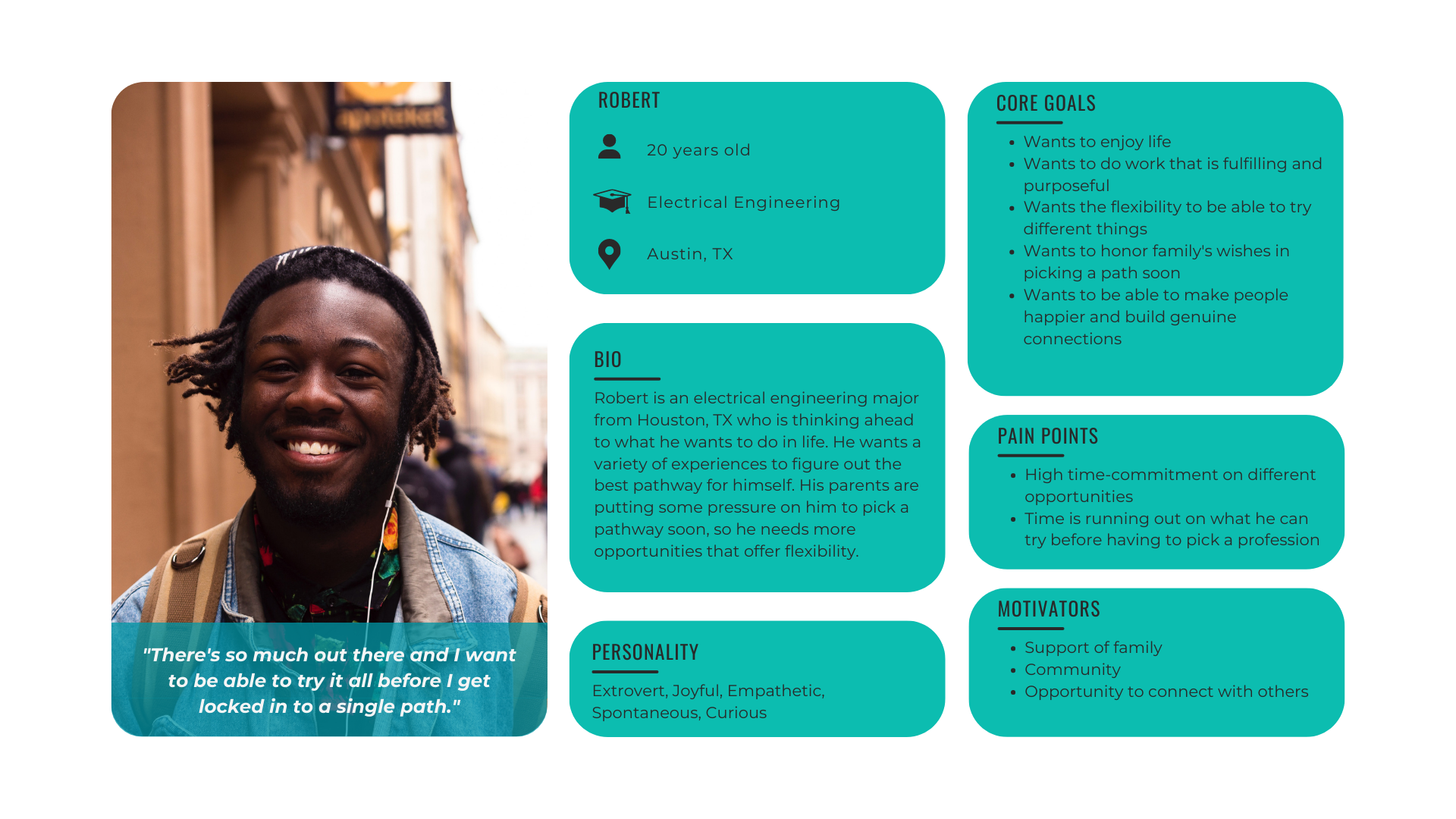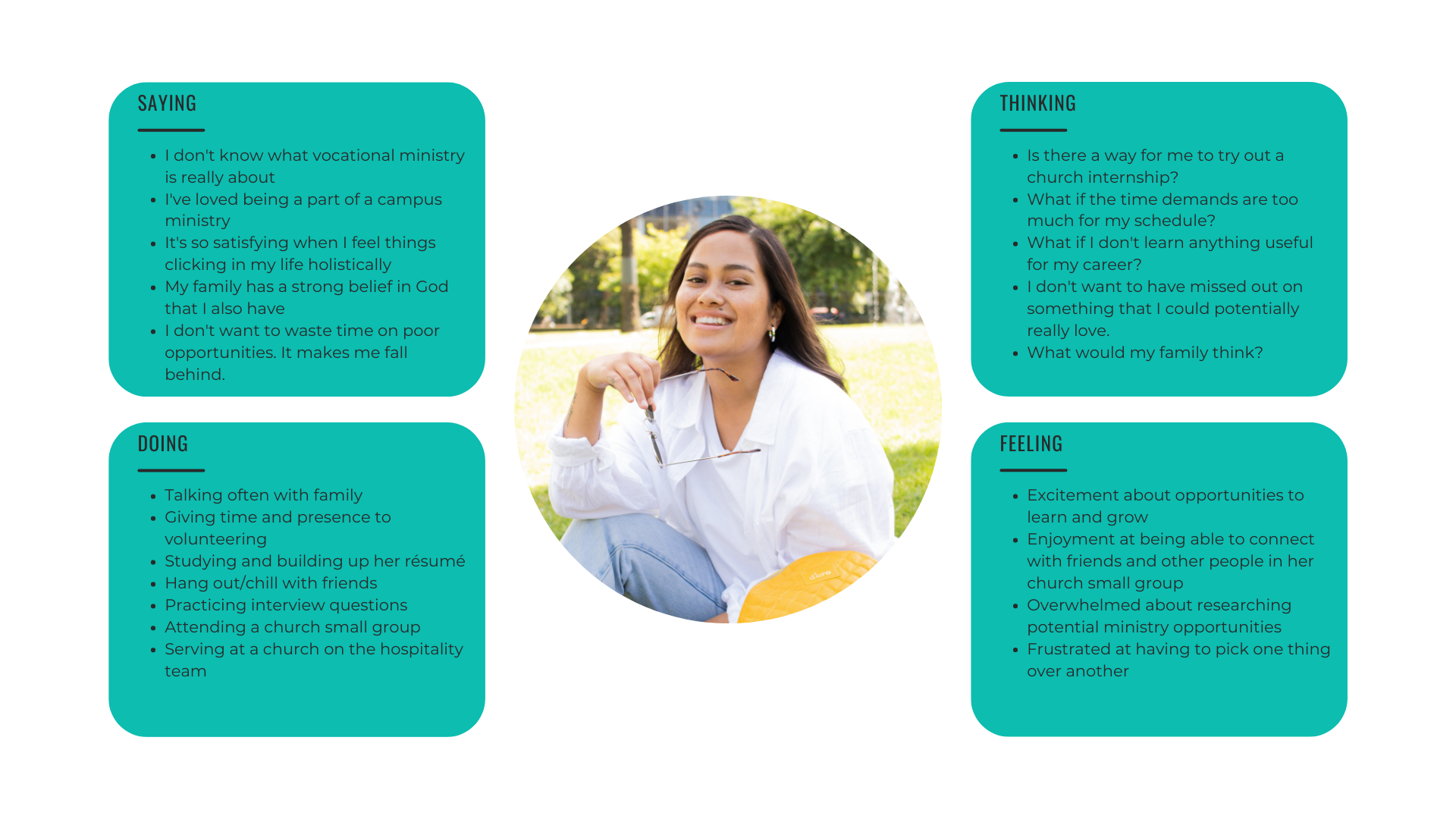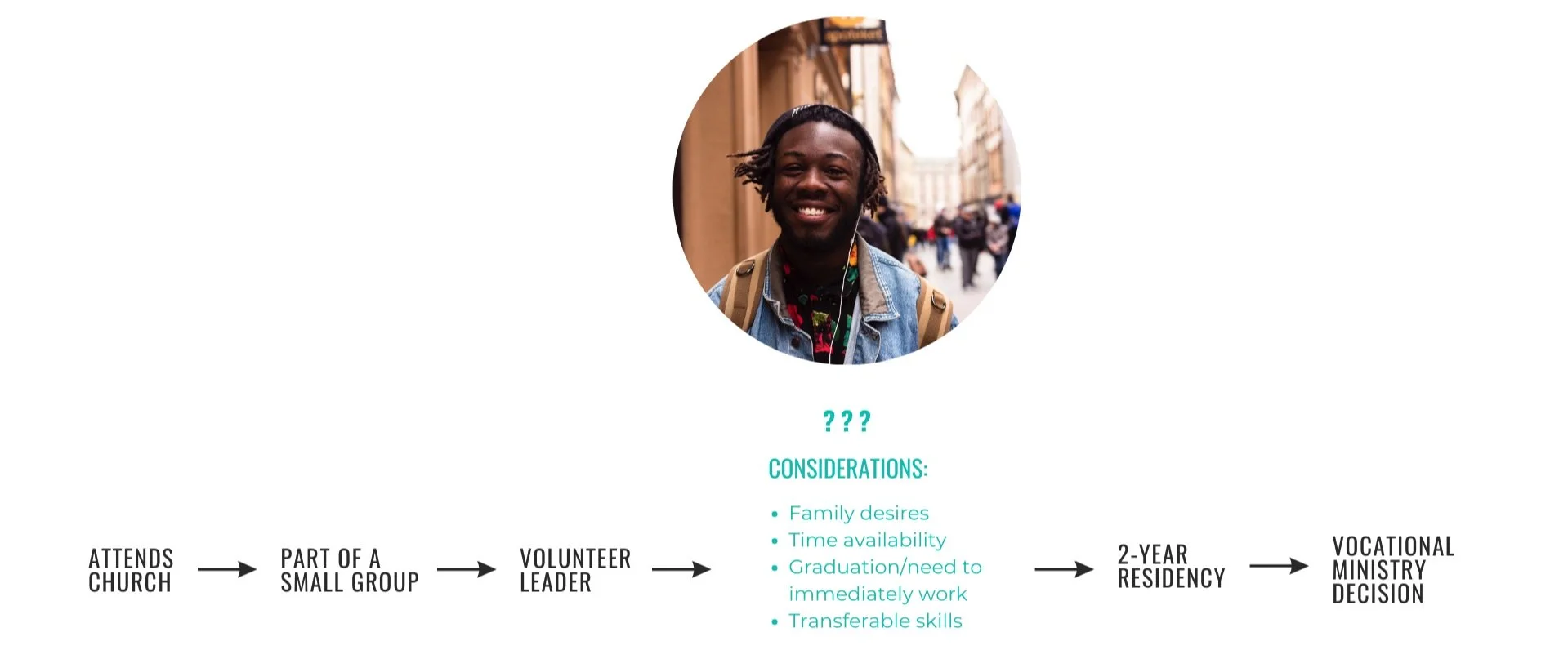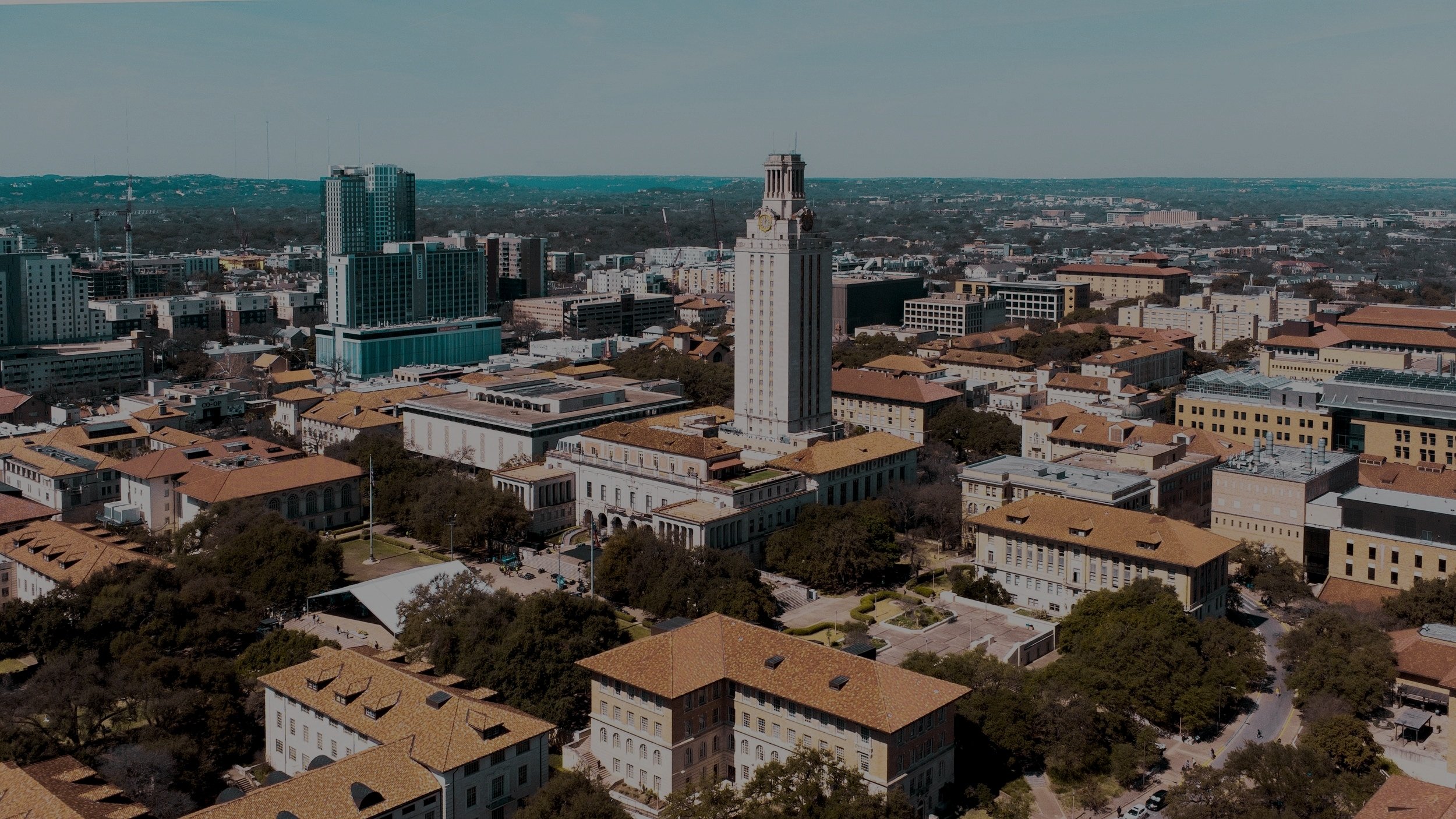
College Internship Proposal
February 2022
2 Person Team - College Director and myself
My Role: UX Researcher and presenter
This is how I got the first college internship program approved at my workplace.
The Challenge
According to a study done by the Psychological Bulletin, there is a weak correlation between education level and job performance. In another study done by ManpowerGroup on 2,000 employers, over 50% of organizations listed critical soft skills, such as problem-solving and collaboration, as the most valued skills. There is a gap that exists in what college students are asked to do in achieving quality grades and what recruiters and employers are likely to look for regarding a certain degree of people skills. As an organization that seeks to empower college students to thrive after graduation in alignment with our vision to raise up and multiply the next generation of leaders, The Well Austin may benefit from exploring ways to close and fill in that gap.
The Client
The Well Austin is a church in Austin, TX that was founded in September 2012 with a vision to plant 100 churches nationally and internationally in the first 50 years of being a church .
My Role
My role in this project was primarily as a UX researcher tasked with learning the attitudes, pain points, and core goals of students in relation to their development and growth towards life as working professionals post-graduation. In addition, I was the primary presenter of the research data as we made a proposal for a college internship program.
Research
First, I started by understanding what general student experience was like with internships and residencies in ministry-related contexts. I did this by doing a competitive audit of two direct competitors and two indirect competitors.
Next, I interviewed 8 individuals on what problems they face regarding preparing for life after graduation as well as how and why they choose the development opportunities they engage in.
My script addressed multiple perspectives and angles using open-ended questions such as: “How do you feel about how prepared you are for life after graduation?”, “What kind of leadership opportunities do you seek out?”, “What are the main reasons you've had to say no to an opportunity you wanted?”, and “Where would you look first for a valuable experience to put on your resume?”
The full interview script can be found here.
Each interview lasted 10 minutes in length. Additionally, I conducted a broader student survey with questions utilizing numerical scales and multiple choice selections to add to the data I gathered.
The survey questions I used can be found here.
Based on this data, clear pain points and opportunities began to emerge, which are summed up below:
Pain Points
Opportunities
After this, I used the data collected to create two student personas that effectively demonstrate the pain points and opportunities that we have.
After this, I wanted to be able to demonstrate to potential stakeholders the importance of building an internship program that would fulfill the needs of people like Robert and Selina while also achieving the company’s goals. To do this, I created an empathy map for Selina as well as a pipeline illustration for Robert. I wanted the stakeholders to be able to empathize with these students’ stories and ask questions such as: What feelings do they have? Do we have a chance at giving them opportunities that they want and need? How can we improve their experience and equip them well for their future?
Student personas
Finally, I put all of this together in a presentation with our internship proposal as well as next steps.
You can find the entire presentation here.
Lessons Learned
This was a gratifying experience for me. Being able to do student-centric research helped me connect with their experiences and empathize with their pain points as well as their hopes. I was proud to be able to uplift their voices by highlighting the insights from the research data as well as through the stories of the personas I created. It felt rewarding to have seeded the idea of the company’s first college internship program in a way that met student needs that we hadn’t been able to do before.
In the future, I may simplify the next steps that I proposed to just one or two so that the stakeholders don’t feel overwhelmed by the amount of work that still needs to be done. Though my goal was to show them that we had thought through the work in a comprehensive manner, it may end up distracting them from the main point of the presentation and proposal.
